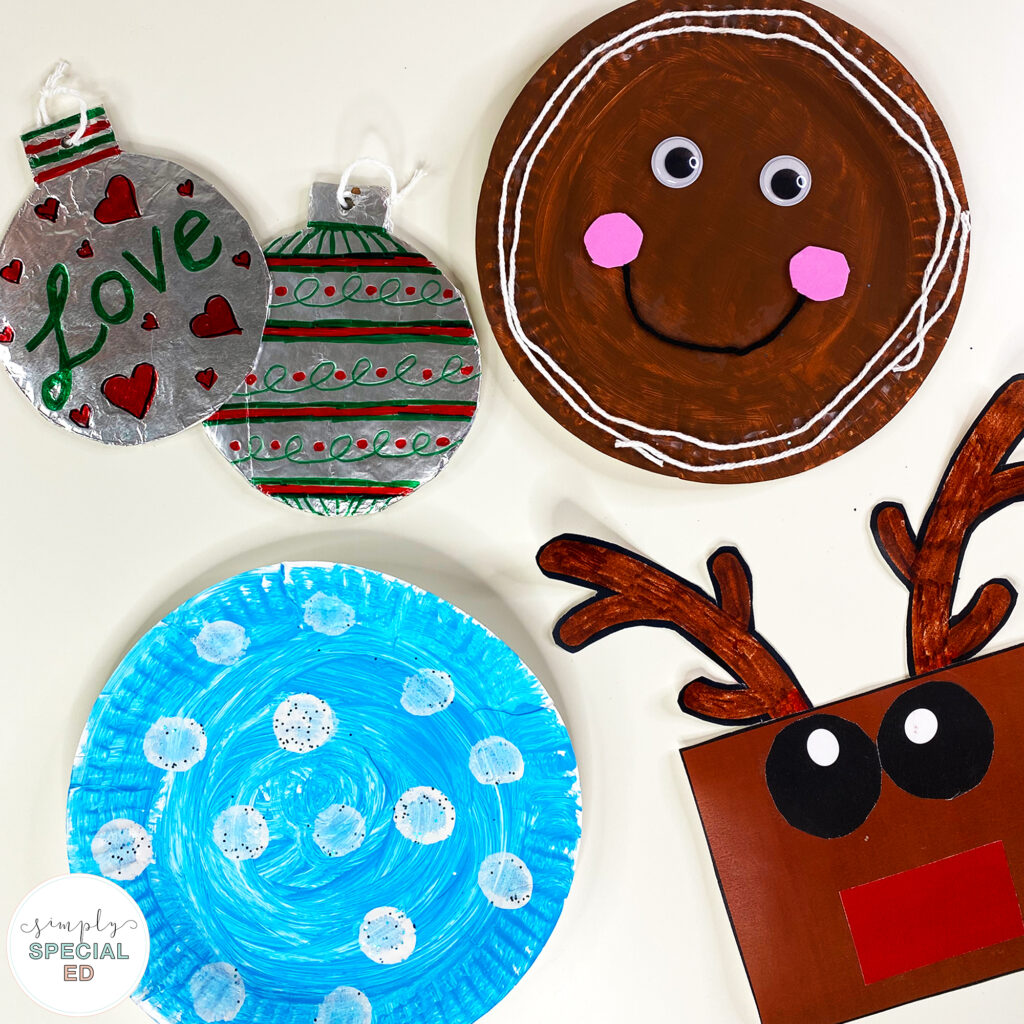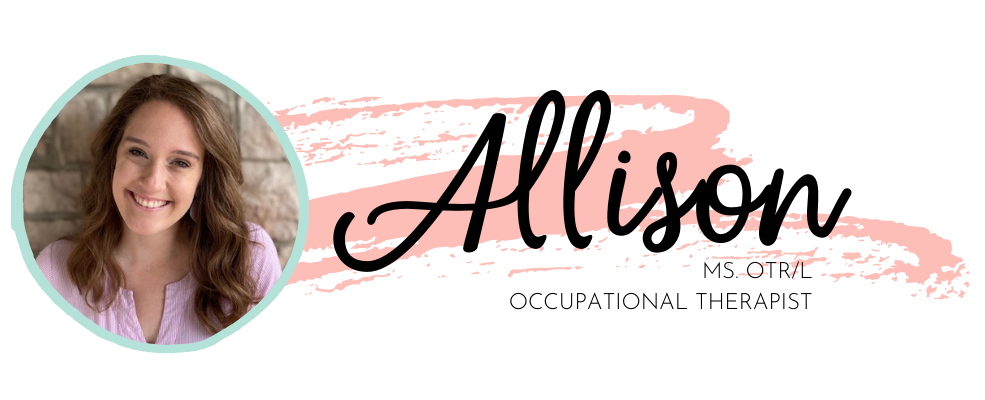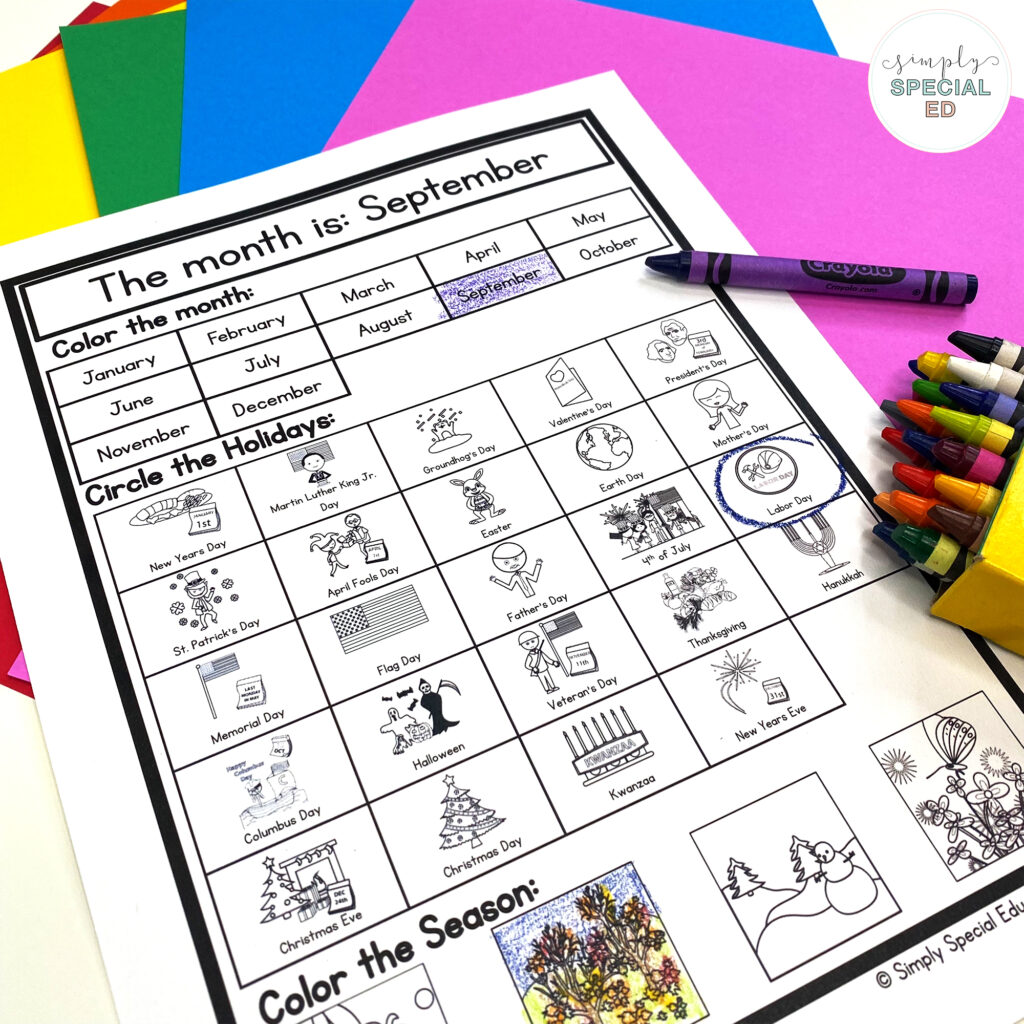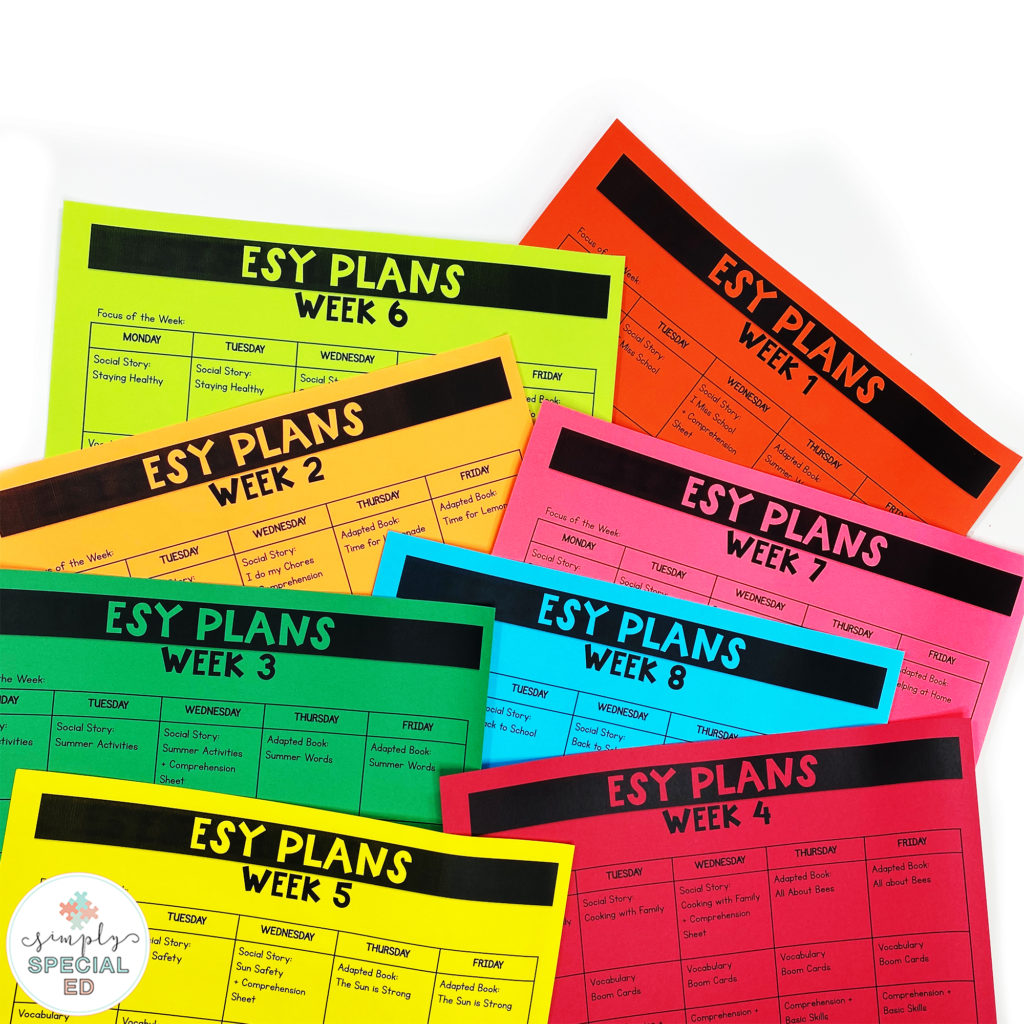Being a special education teacher is tough, but so rewarding.
With the “extra” time we do have, we spend it researching and writing IEPs and organizing all the things…

I absolutely love what I do, but if you’re anything like me, you know there are certain times throughout the school year when you need to re-stock on your most used items.
I call them my “must-haves.”
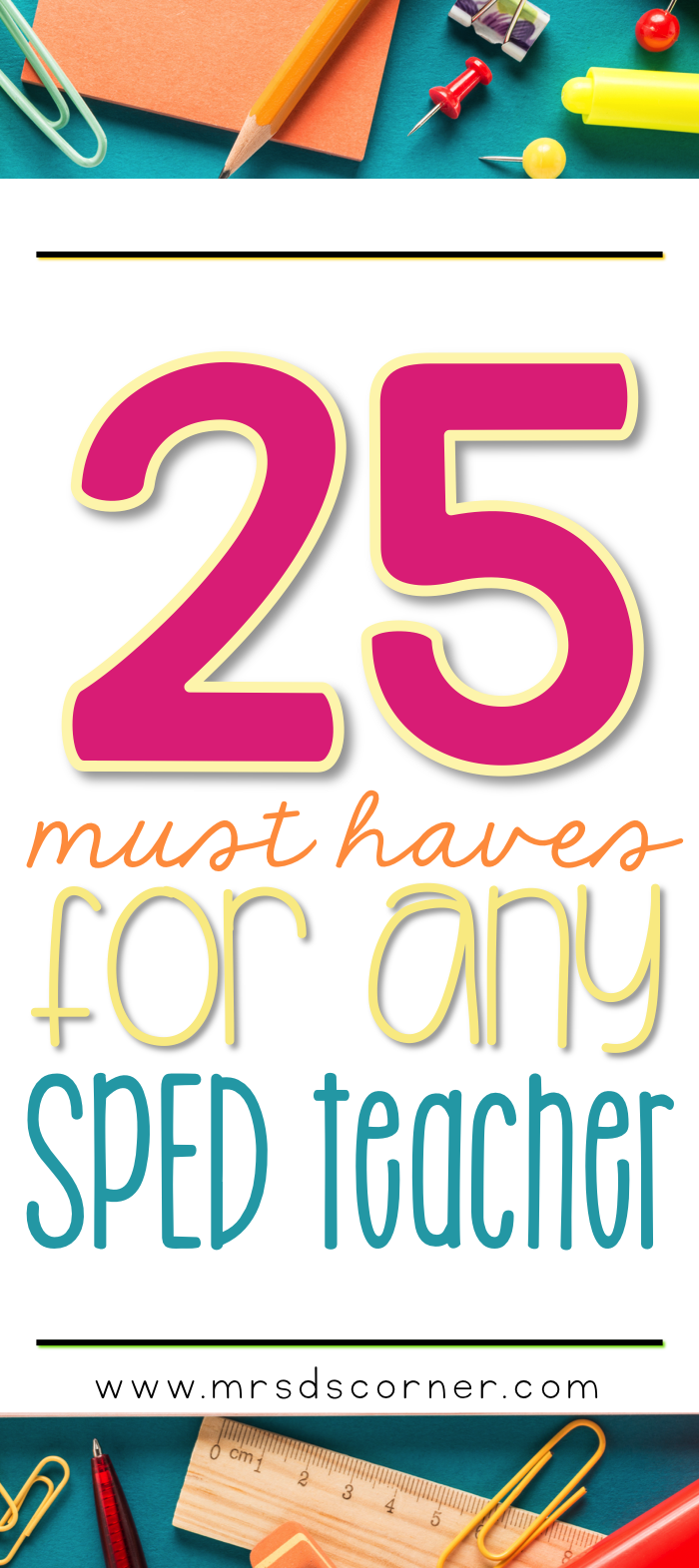
Your must haves can be anything from a classroom supply for your students to something you personally need to get you through that 2-hour IEP meeting (and we all know those happen). So today I am going to share my 25 must haves for any SPED teacher, whether you’re a veteran or a newbie, a self-contained teacher or co-teacher, a pre-K or high school teacher.
At the top of the list are things you can buy. You know, with money. The things at the bottom are things that have no value. You know, they’re priceless. Especially the last one.
OH YEAH… and if this post makes you want to go shopping, scroll to the bottom to access links to the items listed in this post.
This post contains affiliate links to products that might help you when teaching.

Personal Laminator
I’ve had a Scotch Thermal Laminator for a little over two years now (I actually own two), and it has been life-changing. You know those times when you need something right away Monday morning, but you don’t have time to wait 20 minutes for the school’s laminator to heat up? Then you have to cut it out, add the Velcro, and get it ready before the kids come? Yeah… get yourself a personal laminator (or two) so you can get it all done on Sunday night with all of the necessary supplies. It will change your life.

Velcro
You will use this stuff for everything and anything. And I suggest buying Velcro coins so you don’t have to cut Velcro strips for tiny pieces like visual schedules and such.
Feiner Supply has the best price. I bought a 1,500 pack of Velcro hook coins and a 1,500 pack of Velcro loop coins in September… and it lasted me through the middle of December. That’s a lot of Velcro coins, but it was one of the best decisions I ever made. Invest in good Velcro!

Planner
I love my Erin Condren Life Planner (link)! The interchangeable covers are my new favorite thing too. I promise you that my life would be in complete chaos, and I wouldn’t be able to tell up from down without my planner. Definitely a must-have!
If you’re curious about the difference between the Life Planner and the Lesson Planner, take a look at this updated, 2020 video comparison I did just for you!
For notebooks, I really like keeping a Rocketbook with me because it makes it so easy to transfer everything online.
IEP Planner
In addition to my planner, I also have my IEP planner, which has been a lifesaver for keeping me on track with managing my caseload.


Plastic Containers
I could just stare at that picture for days… it is just pure teacher Heaven. Color-coded bins and any type of plastic containers are just what any SPED teacher wants and needs. Set up work task bins, organize all of your manipulatives, or use them to house snacks and other goodies. The possibilities are endless!
Snacks and Candy
This can be anything that you and your students like. Yes, YOU need to have that secret candy stash for when that IEP meeting lasts just a little too long… or your room got trashed from a meltdown. Just eat the candy, and you’ll feel better. One Two Three Reeses cup won’t hurt!
I know that lots of other teachers will tell you no candy or treats for kids, but guess what… our kids thrive off of rewards. And, honestly, some of them are only rewardable with food. You know what’s best for your students, so if the only way a student will finish a writing activity is if you reward him with fruit snacks, well, then you’d better make sure you’re stocked up.

Hole Punch
The Swingline low force single hole punch is my absolute favorite hole punch of all time. I bought it a few months ago when I was literally going home with muscle bruises on my palms from the old, really tough single-hole punch. This baby doesn’t hurt your palms, is super easy to punch, and will save you lots of time.
Three-Hole Punch
I love this one because you can do a ton of sheets at one time. It says 40 sheets, but it depends on the thickness of the paper you’re using. It’s really easy to use and helps you get things done quickly.

Scissors (Nonstick and Spring Loaded)
It’s always a good idea to have multiple pairs of adult scissors in your classroom and at home. I recommend getting a pair of nonstick scissors and a pair of spring-loaded scissors. Don’t forget; you’ll need to keep a *special* pair of scissors lying around for Velcro cutting. 

Clear Page Protectors / Sleeves
You can use sheet protectors for SO many things in the classroom… and anywhere to keep you organized. Did you know they even make them with little lips on the top so your papers don’t fall out. They have been amazinggg for center work! My kids can drop them and fling them around, and the paper stays put inside  Genius!
Genius!

Paper Trimmer
I didn’t purchase one of these until a few months ago… and I have no idea why I didn’t buy one sooner. Having a paper trimmer at home and at school has made cutting out centers and adapted books so much quicker and easier. You definitely need one of these.

Magnetic White Board Hooks
I keep two sets of these white board hooks on the front whiteboard. It’s nice to hang special schedules up there for assemblies, adapted books, or anything really! You can hole punch the top corner of a baggie, store things in the baggies (like PECs or visual schedule pieces), and then hang them on the hooks.

BoardMaker
If your district doesn’t provide you with a BoardMaker CD, then they need to get on the ball and you need to tell them about it. You can use BoardMaker Online to create visuals, schedules, Core Boards… everything and anything your students will need.

Fidgets
Fidgets are one of those things that you’ll thank me for later… and it goes into #13, so read on.

Sensory Reinforcers (silly putty, slinkys, and squishy toys, OH MY!)
This includes a wide range of things. We all know that, quite frequently, our students go in to sensory overload… and at many points throughout the day, it is smart to give a sensory break. Our kids just need it, and you’ll thank me later. You can check out my Pinterest Board for more ideas on DIY Fidgets and Sensory play. Find a list of sensory bin fillers here.
Theraputty and Play-Doh fall into this category, too, and I couldn’t live without them!
Hand Puppets
Puppets may not be the first thing you think of as a tool in the classroom, but they’re a great way to lower the threshold of participation and engagement. There’s just something about puppets that makes them easy for kids to relate to and feel comfortable with. Don’t believe me? Try them out! I think you’ll be surprised!

3 Ring Binders
Again, with the organization. I use binders for so many things… Core board storage, IEP information and data collection, binder work tasks. Always keep a few different sizes lying around, too. You never know when you’ll need that 3″ binder.
Colorful File Folders
Do you color-code your tasks or your students’ information? I do! Colorful file folders are a must because they help me stay on track and keep all the things organized!

Binder Rings
I would be lying if I said I haven’t already used 100+ binder rings this school year. On what? EVERYTHING! Everything and anything to keep things organized, even on-the-go progress monitoring. Man, oh man, I should probably just buy stock in 1″ binder rings. Is that possible?

Manipulatives
These can be anything… and the kids absolutely love them. One thing I’ve found to help my lessons be successful when using manipulatives for a lesson is letting the students play (yes, PLAY) with whatever manipulative we are going to be using. I’ll set a timer for a minute or two and let the kids know that after the timer goes off, it’s time to work and no more play. Works like a charm.
Lakeshore Learning is a great place to get manipulatives (but they can be expensive, so always check Amazon).
And for manipulatives storage, clear stackable containers are an absolute must!

Color Printer
If your school doesn’t give you access to a color printer, or you don’t have unlimited access to a color printer at school, I highly suggest purchasing a color printer. I’ve heard great things about the HP Ink program, too, but I’ve not personally given it a try.
And if you’ve not heard about HP Instant Ink, you can sign up for a free month here: FREE MONTH.

Cardstock
In December, I had already gone through 9 reams of white card stock. Yep, you read that correctly. NINE. You’ll use it for everything… especially with that personal laminator. So at the beginning of the year when parents ask if you need anything, your answer should always be, “Yes, white card stock please!“
Work Tasks
Invest the time and money into creating and making valuable, workable, independent work tasks for your students. Here is a great Pinterest board to give you an idea of what work tasks are and how to build them yourself.
Photo Storage Boxes
Need a place to store those task cards? These photo storage boxes are perfect! You can get them in different sizes and amounts depending on how many you need for your work bins.
Dry Erase Pouches
Sometimes, you don’t want to use task bins for centers and want students to practice writing. For those instances, dry erase pouches can be a great option!

Magnetic Tape
This stuff is genius! Now, it isn’t strong enough to hold weight onto your board, but it works great for cookie tray tasks and hanging papers on the front board.
Magnetic Shelf
I was doubtful that a magnetic shelf would be strong enough to hold my dry-erase markers and eraser, but this little one is! If your whiteboard isn’t magnetic, there’s a wall-mounted one that works great, too!
Astrobrights Colored Cardstock
I have a color-coding addiction, and that means that the brighter the colors are, the happier I am! Astrobrights colored cardstock is a must-have for keeping everything color-coded and organized.
Clipboards
My students have always loved learning and working in unconventional places. Sitting under their desks? Check. Working in the classroom library? Yep! Without clipboards, they’d have a much more difficult time concentrating and getting things done. I really like this clipboard organizer for keeping them neat and tidy, too!
Magnetic Curtain Rods
There have been plenty of times when I wanted to hang anchor charts or posters but didn’t have the right space to hang them. Enter magnetic curtain rods! They are a game changer for hanging things in the front of the room (hello, magnetic whiteboard!) and can be repositioned as needed.
Super Sticky Easel Pad
If your whiteboard is not magnetic, don’t worry! These Super Sticky Easel Pads can work just as well!
Pocket Charts
I love all types of storage, and this 30-pocket pocket chart is one of my favorites. It makes it easy to organize everything from students’ completed work folders to organizing the paperwork I need for IEPs. I also like that it’s black so that I can use my colored folders in it, and it doesn’t clash!
Amazon Echo Dot
If you’re allowed to have an Echo in your classroom, get one! They’re a lot of fun and can change the mood of a room in a heartbeat. Play relaxing music, get a joke of the day, or find out the weather with your handy digital assistant.
Digital Timer
Sure, you could use your phone, but many schools frown on teachers having their cell phones out during the school day. Instead of worrying about getting in trouble (or having your phone broken!), grab an inexpensive digital timer. They’re great for keeping track of center and small group time, playing games, and more.
Construction Paper Storage
Let’s face it; we go through a lot of construction paper in special editions! Keeping it organized by color is easy with this construction paper storage unit!
“Junk Drawer” Kit
These are all of those little things that are helpful to have in a box in your closet. They are the things you end of needing a few times a year but are invaluable when it comes to saving your time, clothes, and sanity!
- Small sewing kit
- Goo-Gone
- Small tool kit
- Measuring tape
- First Aide Kit
- Toothbrush
- Toothpaste
- Deodorant
- Extra makeup
- Brush
- Hair ties
- Lotion
- Lip balm
- Feminine hygiene products
- Eye drops
- Lint Roller
- Plastic utensils
- Batteries
- Clothespins
- Fishing Line
- Nail file
- Nail clippers
- Packing tape
- Eyeglass repair kit
- Tide pen
- A couple of plastic bags (good for putting wet or soiled shoes or clothes in)
- Toothpicks
- Phone charger & cord
- Safety pins
- Tweezers
- Cotton swabs
- Acetaminophen/Ibuprofen/Pepcid/Immodium/Gas-X (if you’re allowed to keep those things in your room)
- Fabric softener sheets (they’re great for reducing static cling!)
- Baby wipes
- Contact solution and contact lens case
- Spare pair of eyeglasses
Clothes
Am I suggesting you buy clothes? Well, you can interpret it that way if you want! 
What I’m actually talking about is having an extra set of clothes handy in case you need to change during the school day. Trust me, sometimes things come at you, and there’s nothing you need more than a clean pair of pants and a shirt (and don’t forget the undergarments!)! I’d also suggest keeping a plastic rain poncho, a pair of rain boots, a hat, gloves, a scarf, a sweater, and an extra pair (or three!) of sunglasses in a bag in your room.
Step Stool
If you’re allowed to bring in your own step stool, get one that you can easily store away. You definitely don’t want your students climbing on it!
Small Vacuum and/or a Dustpan and Broom
Messes happen, and it’s not fair to leave everything for the school custodian at the end of the day. A small vacuum or even a dustpan and broom can go a long way to keeping your classroom tidy.
A Spare Car Key
Don’t worry about locking your keys in your car anymore – just keep a spare car key in your classroom! If you tend to do this quite often, you might also want to consider a AAA Membership. 
Now, these are the things that cost you nothing. You may find humor in my writing about them, but in all seriousness… you need them. 
Strong Stomach
You will see everything… and I mean e.v.e.r.y.t.h.i.n.g. in your special needs classroom. Vomit. Boogers. Spit and drool. Poop. Yes, I said poop. Poop in the urinals, maybe on the walls. Diapers and pull-ups. G-Tubes. More vomit. And more poop. Just wait. It’s all coming your way.
Sense of Humor
Some days, you will go home so frustrated, defeated, or overwhelmed that you just want to break down and cry… and sometimes, you’ll be able to do nothing but laugh about it. For example, the day one of my students pooped in the urinal (see, I was speaking from experience!) I was mortified… but now it’s absolutely hilarious.
Supportive Administration
This is a big one because if you don’t have a supportive administration, you’re going to have a rough time. And I don’t just mean from your assistant principal and principal… you need it all the way up. It’s rare and hard to come by being a special education teacher, so if you happen to be at a school where you feel and are supported, know that you are one of the lucky ones.
A Good Mentor
Whether you’re a veteran, a newbie, or somewhere in between the two, you need a mentor. Your mentor doesn’t have to be someone at your school or in your district. It can be someone in a different state or country. But you need someone to go to when you feel overwhelmed or someone you can share the successes with! Don’t keep it all inside; there are people out there who support you!
I have found so much solace in good times and rough times in a special ed group on FB. When I feel like I’ve tried everything, I know I can always turn to this group of special people and ask their opinions. We all teach something different and we’re all in different stages of teaching, but we’re there for one another… and it really has made a world of difference.
Paraprofessionals
I. have. no. idea. what. I. would. do. without. my. paraprofessionals. Especially the one who has been with me over the last year when we lost the 2nd para in February until November when we got a new one. I probably would have gone absolutely crazy without him… and I’m sure there are times when I did go crazy. Thankfully, we have been gifted with a new para, and boy, do I ever feel lucky. So please, please, please, don’t EVER take your paraprofessionals for granted.
Do you agree with this list? What is something you couldn’t survive being a SpEd teacher without?

YOU MIGHT ALSO LIKE:
- Sensory Toys for Kids with Special Needs
- Do’s and Don’t’s for Using Water Beads in a Special Ed Classroom
- Must Have Fidgets for Any Classroom
The post 25+ Must-Haves for Any SPED Teacher appeared first on Mrs. D’s Corner.











